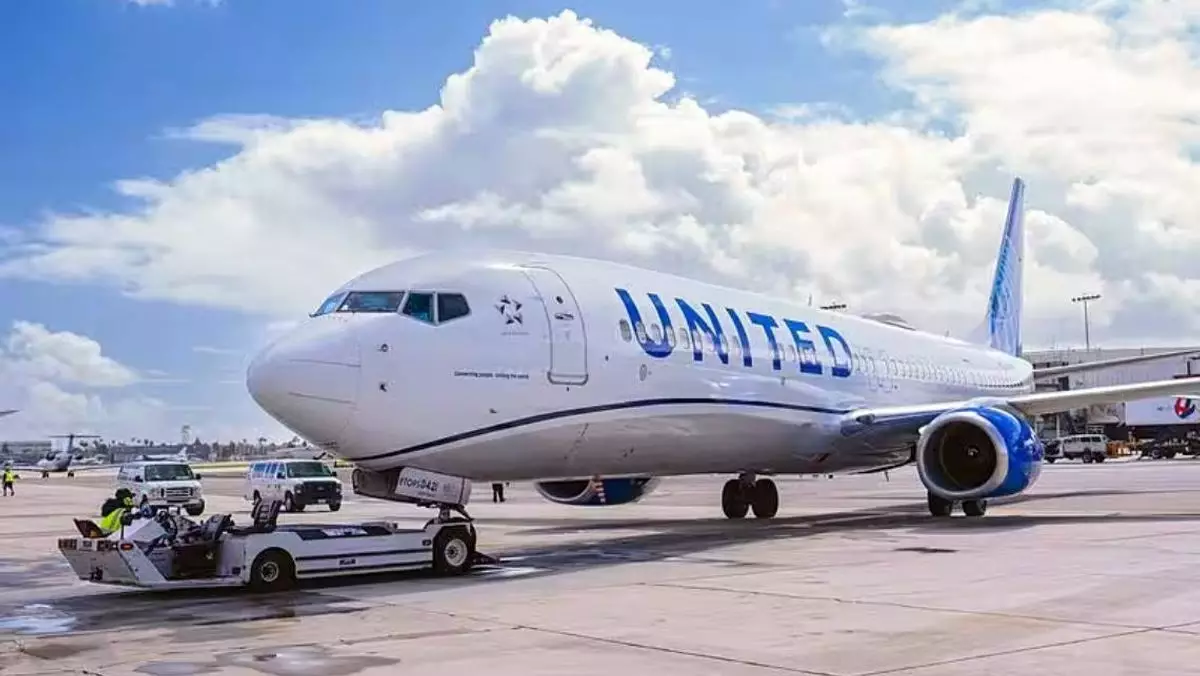In the tumultuous landscape of the airline industry, setbacks are inevitable, but how an airline responds often distinguishes the resilient from the stagnant. United Airlines faced such a challenge in late April and May when operational issues and negative publicity surrounding Newark Airport undermined its performance. The operational disruptions, primarily stemming from baggage handling mishaps and staffing shortages, considerably affected customer confidence and operational metrics. During this period, United’s load factors at Newark plummeted by as much as 15%, signaling a significant dip in flight occupancy that could have long-lasting ramifications on revenue streams and overall brand reputation.
What stands out in United’s narrative is its acknowledgment of these faults and, more critically, its swift action to rectify the situation. The airline’s leadership, particularly COO Toby Enqvist, openly discussed the impact during a quarterly earnings call, emphasizing transparency about the carrier’s challenges. This candid admission reflects a sense of accountability that is essential in the aviation industry, where operational reliability directly correlates with profitability and customer loyalty. Despite the initial downturn, United did not capitulate but recalibrated its strategies to stabilize Newark operations and restore customer trust.
The turnaround was catalyzed by a combination of infrastructural improvements and technological advancements. A key development was the reopening of a heavily under-construction Newark runway in early June, which addressed a critical bottleneck. Simultaneously, the FAA’s improvements in air traffic management and control technology helped streamline flight operations, reducing delays and cancellations. These factors contributed to a remarkable recovery, with Newark’s performance metrics soaring—by June, the airport had impressively become the best among New York-area airports in on-time arrivals and cancellations, surpassing JFK and LaGuardia.
Transforming Challenges into Opportunities: The Road to Recovery and Growth
This newfound operational stability at Newark signals more than just a temporary fix—it represents a strategic pivot point for United. The airline’s agility in responding to operational challenges demonstrates that resilience isn’t merely about weathering storms but actively transforming adversity into competitive advantage. By increasing Newark’s daily departures from 290 to 380 flights over a span of just a few weeks, United proved its operational flexibility and commitment to reconnecting with its customer base.
Furthermore, the improved on-time performance in Newark can have enduring effects on passenger confidence, which is especially crucial in an industry still grappling with the ripple effects of the pandemic and economic uncertainty. The airline’s ability to stabilize one of the nation’s busiest airports not only mitigates immediate financial losses but also enhances its reputation as a reliable carrier in a competitive market.
The strategic focus on Newark pays dividends beyond regional recovery. United’s overall second-quarter financials reveal a nuanced story. While revenues increased slightly year over year, reaching $15.2 billion and outpacing some analyst expectations, net income declined by roughly a quarter. This discrepancy underscores the inherent costs of operational recovery and capacity adjustments that airlines often bear during transition phases.
Yet, what’s particularly compelling is United’s optimistic outlook rooted in economic and political stability. With sales in July already up by 6% compared to the previous quarter—driven chiefly by gains in business travel—the airline is betting on a favorable macroeconomic environment. CEO Scott Kirby’s remarks about increased certainty in geopolitical and fiscal policies signal that United is positioning itself for a sustained recovery, rather than a temporary bounce-back.
This confidence, coupled with operational enhancements, lays the foundation for future growth. While the second quarter was marred by operational hiccups, United’s proactive approach has set the stage for a more stable and lucrative second half of the year. The airline is demonstrating that even at a time when external shocks seem relentless, strategic resilience and infrastructural investments can turn temporary setbacks into catalysts for long-term success.


Leave a Reply